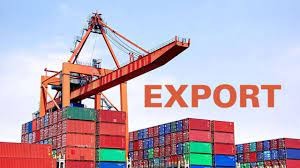ISLAMABAD: The outgoing 2022 proved a tumultuous year for the manufacturing sector, especially the export-oriented industry.
The second half of 2022 particularly dampened the industrial productivity, resulting in closure of units and a decrease in exports.
A series of challenges, including flash floods triggered by summer monsoon rains, energy shortfall, high production cost, and depreciation of rupee against dollar marred overall performance of leading industries.
Import restrictions also put a dampener on manufacturing.
The textile industry, which is a leading export-oriented sector of Pakistan and constitutes 64% of the country’s total exports, witnessed a decline of about $2.2 billion in export proceeds as hundreds of textile units halted production because of energy shortfalls and rising production cost.
Arif Ahsan, a former chairman of All Pakistan Textile Mills Association (APTMA), told WealthPK that political uncertainty, rising production cost, energy shortfall and import restrictions were the major reasons for the declining textile exports.
He also pointed out that following Pakistan’s exit from the FATF’s grey list, it was expected that a positive and healthy business environment would prevail in the country, but all these hopes were dashed.
However, he said despite all odds in 2022, the textile sector remained as a leading exporter, fetching annual exports worth $19 billion.
It is to note here that Pakistan’s textile industry covers four allied industries, including knitwear, leather garments, bedsheets and other textile accessories.
As per the figures released by the Pakistan Bureau of Statistics, during the first six months of fiscal year 2022-23, the country’s trade deficit witnessed a drop of 32.65% and stood at $17.13 billion compared to $25.438 billion during the same period of the previous year.
According to the PBS data for 6MFY23, exports value stood at $14.249 billion compared to $15.125 billion over the same period of FY22, posting a 5.78% reduction year-on-year. Similarly, imports decreased 22.64% to $31,382 billion from the previous year’s $40.563 billion.
In December 2022, exports value dropped 16.64% to $2.304 billion from $2.764 billion in December 2021.
The second largest export-oriented sector in 2022 was IT industry, which fetched export value of $3.5 billion. It is anticipated that with better opportunities, Pakistan’s exports in IT sector could climb to $10 billion by 2030.
As per the Finance Ministry’s Monthly Economic Update and Outlook for December 2022, during July-Nov FY23, car production and sales decreased 32.3% and 38.9%, respectively. Trucks and buses production and sales decreased 23.8% and 39.1% and tractor production and sales decreased 40.9% and 52.3%, respectively.
During July-Oct FY23, six out of 22 sub-sectors witnessed positive growth, including wearing apparel, leather products, chemicals, iron and steel products and furniture. Negative growth was witnessed in food, beverages, tobacco, textile, coke and petroleum products, pharmaceuticals, wood products, paper & paperboard, rubber products, non-metallic mineral products, fabricated metal, electrical equipment, machinery and equipment, automobiles and other transport equipment.
Arif Ahsan of APTMA said the government needed to take drastic measures to restore investors’ confidence in the economy.
Commenting about overall industrial progress in 2022, various industrialists opined that currency depreciation, high production costs and import restrictions had made it difficult to maintain healthy growth in exports. They said these challenges had resulted in scaling back of production activity, especially automobiles.
They said the government was left with the only option of either to rely on foreign debt or to look for aid from friendly countries to keep the wheel of economy running.






